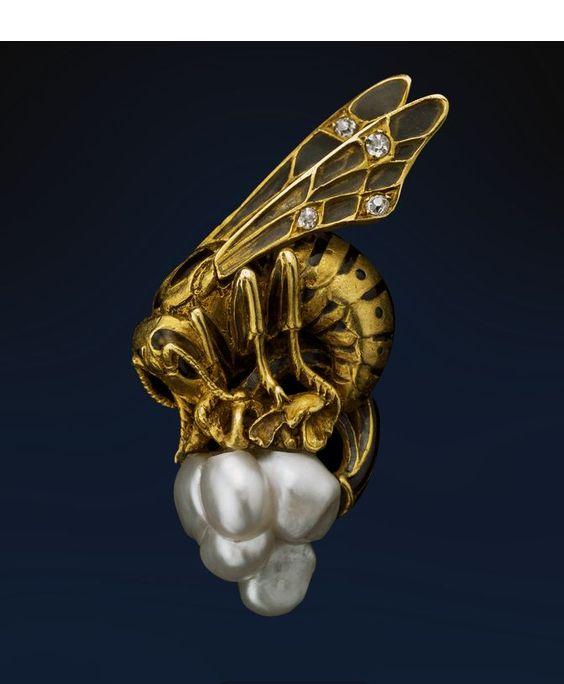
Golden bee - an old motif in jewelry
The golden bee, or rather its golden image, has been appearing in jewelry since time immemorial. Probably the oldest item depicting bees is a gold plaque from the Bronze Age. Found in Crete near the city of Malia, comes from the Minoan culture - 1600 BC. The bee is a symbolic insect that causes both fear and admiration in us. It is considered a symbol of diligence, order, purity, immortality and rebirth. And still miraculously lives with the "fragrance of flowers." Bees are respected for what they produce, because without these substances, life would be much more difficult. Honey sweetened our lives for a long time, and thanks to wax candles, cultural creators could work after dark. Wax is also needed to make models of investment cast jewelry.
The name of the bee in jewelry
In the oldest Sumerian manuscripts dating back to 4000-3000. BC, the ideogram of the king was in the form of a stylized bee. In ancient Greece, bees decorated coins, and bees were engraved on intaglios used as o-rings. The Romans adopted this and many other traditions from the Greeks, and the bee was a popular theme in Rome. Bee coins were very popular in Ephesus, the city where the priestesses of Artemis were called bees. The same name was also used for women initiated in the mysteries of Demetrius, to whom the bee was dedicated. The name Deborah, popular among the Jews, also comes from a bee, but not from zeal or sweetness, but from the bee's dialect - buzzing.
Bee motif in modern jewelry
The bee, beloved by the Church Fathers, has taken up residence in European culture. Her hard work went well with many family coats of arms, and cities also boasted bees on their coats of arms. Bee motif jewelry becomes popular in medieval Europe and continues to this day. For the time being, we're limiting bee symbolism to industriousness, but that's fine too. Each decoration bears the imprint of its era, I mean the style that prevailed in a particular period. However, bees, and especially those made since the beginning of the 200th century, are not much different to this day. The explanation for this is probably simple. A bee should look like a bee, it cannot be confused, for example, with a fly. And jewelry techniques have not changed significantly over the past XNUMX years. I think that the fact that the bee, despite the changes that surround us, still remains a bee, does not deprive it of its charm.
Leave a Reply